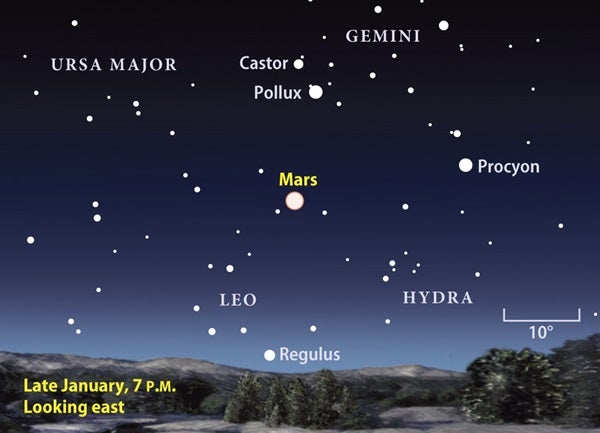Mars shines brightest January 29, when it lies opposite the Sun in our sky. At opposition, the planet rises at sunset, appears nearly overhead around midnight, and sets as the Sun comes up. Mars shines brighter than any other point of light in the evening sky except for Sirius, which lies well to Mars’ right, and Jupiter, which sets in the west not long after Mars appears.
“Mars grows more conspicuous throughout January,” says Astronomy magazine Editor David J. Eicher. “Not only does it brighten by 50 percent, but it also rises significantly earlier. That places it higher in the sky earlier in the evening.”
Although Mars appears dazzling, it’s not as bright as it was at its five previous oppositions. The Red Planet reaches opposition roughly every 26 months. However, Mars’ brightness at opposition goes through a 15- to 17-year cycle. Some oppositions occur relatively near to Earth when Mars also lies near its closest point to the Sun. Others occur when Mars lies relatively far from the Sun. That’s the case this year, so the Red Planet won’t be as close to Earth at opposition as it has in recent years.
As you gaze at Mars from afar, remember that several emissaries from our planet are examining it at close range. Three spacecraft currently observe Mars from orbit: the European Mars Express and NASA’s Mars Odyssey and Mars Reconnaissance Orbiter. In addition to these orbiters, the Spirit and Opportunity rovers continue to motor across the martian surface, 6 years after they arrived for what NASA envisioned as 3-month missions.
- Astronomy myths: Mars will look as big as the Full Moon
- StarDome: Find Mars in your night sky with our interactive star chart.
- Online Reader Gallery: See Mars images and submit your own.
- Sign up for our free weekly e-mail newsletter to stay up to date on more great sky events.











